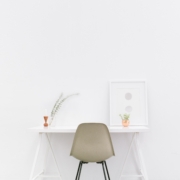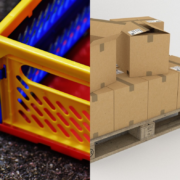Our 10 Best Holiday Organization Tips
With gifts for your immediate family, extended relatives and friends – there’s a lot to buy, wrap and deliver. Decorating the house, preparing food – the list never ends. How can you keep everything organized, maintain your sanity, and have some fun in the process? We’ve got you.
Check out our favorite holiday storage and organization tips below, and give yourself the gift of calm this holiday season.
- One Step at a Time
First of all, remember that everything doesn’t need to happen in one day. Each step gets you a little bit closer to the finish line, and you’re doing great.
The holidays are a time to celebrate, cherish, and express gratitude for what you have. If you get stressed out about all of the items on your to-do list, remember to be grateful for the people the gifts are for, the nourishing food you’re cooking, the beautiful home you’re decorating. Pretty soon, you’ll return to what this season is really all about.
- Eliminate the Unnecessary
That being said, this time of year doesn’t mean you have to say yes to everything and please everybody. Say no to anything you can’t make it to. Eliminate things from your to-do list. Make dinners simpler, hire a dogwalker temporarily, save yourself for the more important stuff. It’s okay!
- Put Everything in the Calendar
Even if you groom through your checklist and weed out the non-essentials, this time of year will still have a million things. From school plays and recitals to office holiday parties and volunteer opportunities – it’s a lot. Be super proactive about your family calendar and put EVERYTHING into it. Literally everything. It will give you peace of mind and lessen the chance of the dreaded accidental double-book.
- De-Clutter Your Gifts
We mean this in two ways. First of all, don’t feel like you need to buy a gift for every single person. The guy at FedEx? He’s probably okay.
Second of all, give the gift of less clutter for others. Consider any of these clutter-free gifts to help others maintain serenity in their space. From baked goods to e-books – there are a ton of options. Check it out!
- Clean As You Go
Don’t leave it all until the end. Throw away scraps as you wrap gifts, ditch those old strings of lights that are shot – if you do a little bit along the way, the post-holiday clean up job won’t hit nearly as hard.
- Ask For Help
You’ve got a team of people all around you, waiting for jobs. Give them something to do! Let your partner pick up the dry cleaning, ask your child to wrap their sibling’s present, hire a temporary dogwalker to give your pup some love.
There’s no shame in asking for help in your holiday game – go for it! Things will get done faster, and the tasks you keep for yourself will get done even better than before.
- Labels, labels, labels
Label it all. Each and every gift. Which pile of clothes is going to Goodwill and which one is just laundry. Which dish is for the school’s holiday bake sale, and which is for the neighbors. Keeping everything in order will help you and those around you keep it all straight.
- Gift Wrapping Station
Now that your gifts are all ordered, it’s time to set up your gift wrapping station. Gather all of your supplies and set up shop. You can tell your kids it’s “Santa’s Workshop” and prepare presents as they arrive. Rather than messing around in different areas of the house, consolidate it all into one area that will need cleaning towards the end. Plus, it’s a fun way to concentrate all of that holiday spirit into one area.
- Minimize the Christmas Card
We don’t want to tell you to scrap it, (although so many people are!) because we get it. They’re a fun part of the season and a great way to see what all of those distant cousins look like now. But they can also feel like just another thing on the list that’s going to take a ton of time. From getting the photo together to addressing and stamping each and every envelope – it’s a lot. Consider making it digital or combing through your list. Or… no one would blame you for getting rid of it altogether.
- Breathe, and Store for Next Year
After it all, take a deep breath and remember to enjoy! You’ve earned it. Stay tuned for our next blog post on storing those Christmas decorations and how to set yourself up for success next year.











